Night sleep
Daytime naps
Total sleep
9-11 hours
2.5-3.5 hours
14.5 hours

Night sleep
9-11 hours

Daytime naps
2.5-3.5 hours

Total sleep
14.5 hours
Hard to believe, but your kiddo is halfway to one! A 6-month-old baby is sort of magical in that not only are they generally cheery and adorable, they’re also at that sweet spot where they’re fairly easy to care for because they usually aren’t super-mobile yet.
Get your list of questions ready for your 6-month well visit. Besides the slew of routine vaccinations, there’s lots of exciting stuff going on around this time. Your baby might be working on sitting up and crawling, starting to eat solid food, teething, and more. Here’s what you need to know about six-month-old babies.
6-month-old baby milestones for sleep
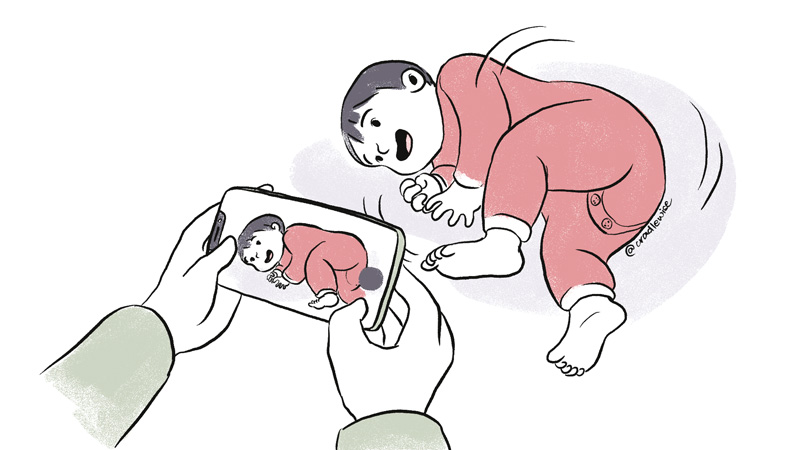
If your baby has been waking up at night, you might be asking yourself (or the internet) if six-month-old sleep regression is a thing. Sleep regression isn’t typically associated with the 6-month mark—more common times are four months, eight months and eighteen months, due to developmental leaps. But anything that causes disruption in your little one’s world, such as illness or starting daycare, could cause a temporary sleep regression.
In terms of new physical skills, one of the important six-month milestones is rolling over. By now, your child can probably roll in both directions, which can be comforting if you had been worrying about them getting stuck in one position. (Don’t fret if you’ve been Googling “can 6-month old sleep on stomach.”) Still, you should continue to follow AAP guidelines and always put them down to sleep on their back, even if they end up rolling over later in the evening.
There are lots of activities for a 6-month-old that will keep them mentally and physically engaged. Many parent and baby swim lessons start around this age, and it’s also important to give them plenty of time on their play mat so they can practice rocking on their hands and knees, which will help them build the muscles needed for crawling. For even more fun, try adding a plastic mirror and watch your little one gaze at their reflection.
6-month-olds also love games that mix mental and physical stimulation such as “This Little Piggy Went to Market” or playing “horse” on a favorite caregiver’s knees. Since they’re getting better at using their hands in new ways (more on that below), you’ll also want to stock your stash of 6-month-old baby toys with soft items that are easy for little hands to hold.
What’s going on in your baby’s brain?
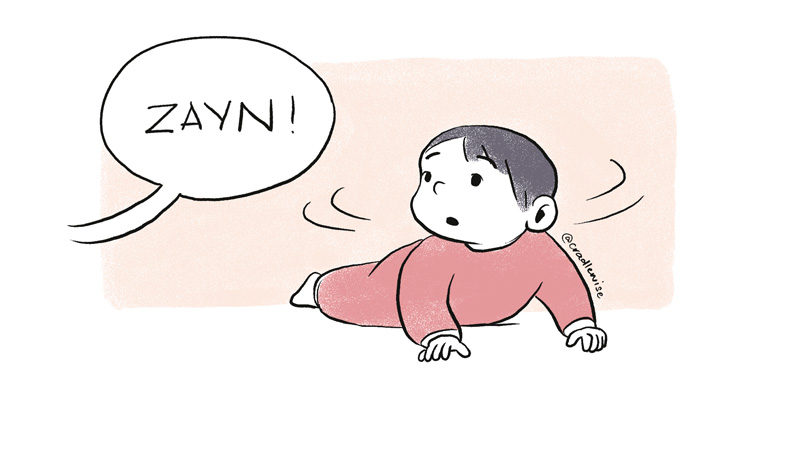
Your little one’s brain is continuing to develop as they become more interested in the world around them. They’re starting to learn to move objects from hand to hand, twist and turn them, and pick things up using a clawlike, raking motion.
Their newfound dexterity is combined with a growing curiosity to reach for whatever looks interesting, whether it’s your steaming mug of coffee or a pile of toy stacking cups. That’s why it’s important to babyproof your home and continue to ensure the area around their Cradlewise is free of things that are potential choking hazards.
By 6 months, babies can generally recognize and respond when you say their name, and are using sounds (usually vowels) to show emotion and respond to noises adults make.
You can help stimulate brain development by engaging in what’s called a serve-and-return interaction, where you do things like repeat back the sounds they’re making (here’s a how-to video from Harvard’s Center on the Developing Child).
How much should a 6-month-old sleep?
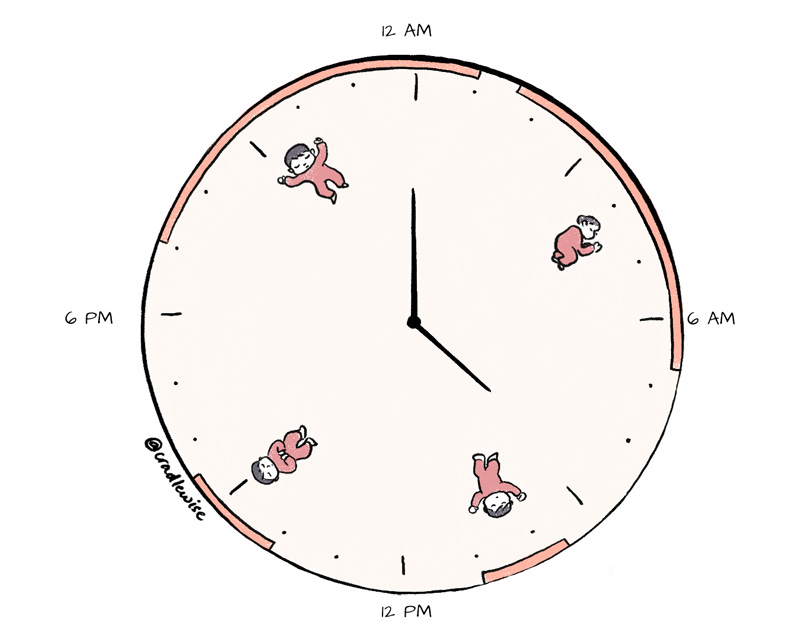
- Total hours of sleep: 14.5 hours
- Wake windows: 2.5 to 3.5 hours
- Number of naps: 2 or 3
The sleep schedule for a 6-month-old hasn’t changed dramatically since last month, although your baby may only take 2 naps instead of 3.
On average, a 6 month old baby will sleep for 6 to 8 hours uninterrupted, with wake windows of 2.5 to 3.5 hours and take 2 to 3 naps.
Babies who sleep longer overnight may nap fewer hours during the day, and the reverse is true as well.
Sample 6-month-old sleep schedule
Your baby’s day will always be influenced by their wake-up time, which is affected by their bedtime. If your baby is still taking a third nap, it will happen in the late afternoon, and bedtime may be pushed later.

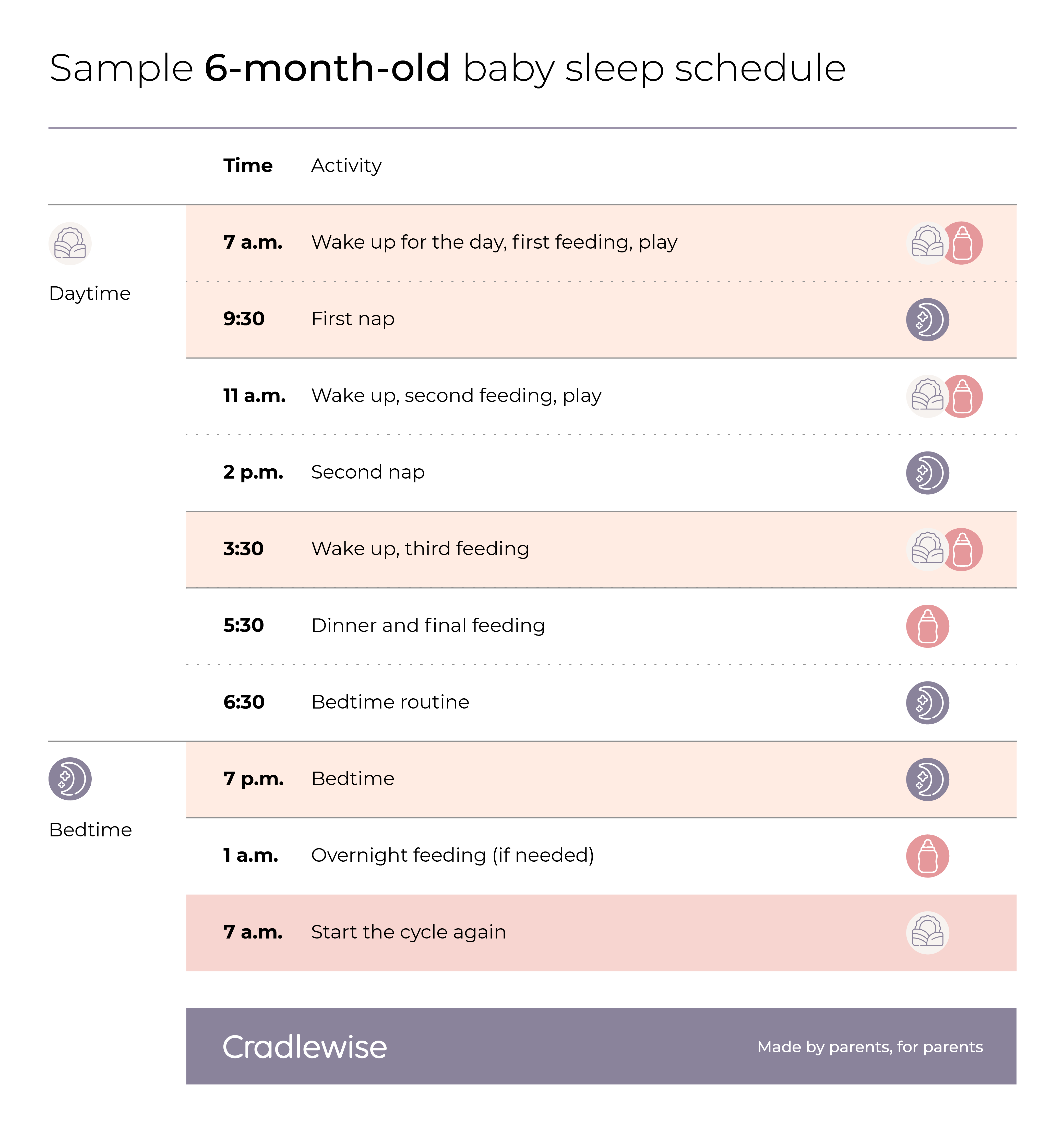
6-month-old feeding tips
It’s time! The American Academy of Pediatrics recommends parents start introducing babies to new foods after 6 months of age. Signs that your baby is ready from the Centers for Disease Control (CDC) include sitting with or without support, having good head and neck control, opening the mouth when the spoon is offered, and swallowing rather than pushing food out.
If your baby can bring their hands to their mouth, they can practice self-feeding. Good finger foods for a 6-month-old baby with no teeth include cut-up bananas, wafer crackers, and scrambled eggs. Well-cooked pasta, finely chopped chicken, cut-up potatoes and peas are good bets.
- How much should a 6-month-old eat: Six-month-old babies usually eat about 6 to 8 ounces of breastmilk or formula at four or five feedings across a 24-hour period. Remember that even if you are adding solid food to your baby’s regimen, the majority of their nutrition at this age should still come from breastmilk or formula.
- How much should a 6-month-old weigh: By now, your baby has most likely doubled their birth weight. You’ll likely see your baby put on 1 to 1¼ pounds this month and grow about ½ inch to ¾ inch in length.
- How often should a 6-month-old eat: The AAP recommends feeding 6-month-old babies every 4 to 5 hours, but some can sleep longer stretches overnight without waking to eat.
In Healthy Sleep Habits, Happy Child, Fifth Edition, Marc Weissbluth, M.D. writes that after the four-month mark, babies don’t typically need to eat more than once overnight. - Tip: Remember that until now, your baby has only had thinner liquids like breast milk or formula, so you may need to dilute their purées at first until they get used to the thicker texture.
- Tip: After the age of 6 months, you can offer your child a small amount of water, but no more than eight ounces in a day, since babies are at risk for a condition known as water intoxication. Breast milk or formula should be given first, and then water can be offered in a sippy cup—this is a great way to practice drinking skills without spilling milk.
How to help support your baby’s sleep during the sixth month
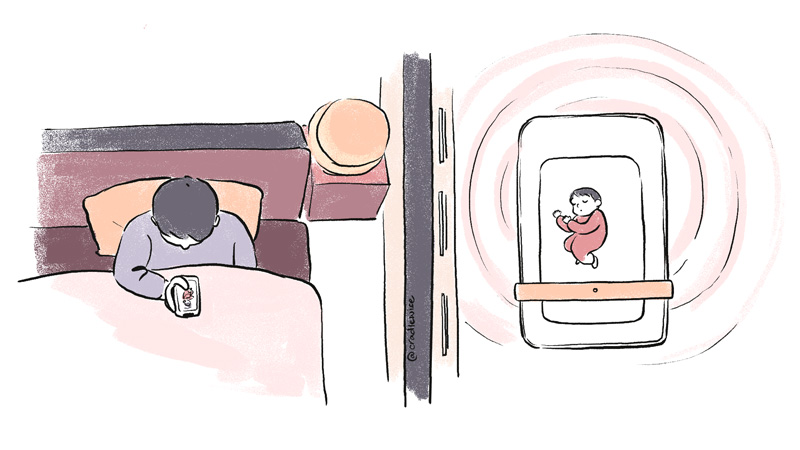
Play detective for night wakings.
Play detective for night wakings.
If your little one has suddenly started waking up at night, there are a few possible causes to consider, such as fever, an ear infection, or an uncomfortable skin condition such as diaper rash (which may be aggravated by new solid foods) or eczema. Diaper rash can be kept at bay by applying a thick layer of zinc oxide paste during the final diaper change of the evening.
Consider sleep training.
Consider sleep training.
If you’ve been Googling “sleep training 6-month-old,” know that this age may be a good time to start if you haven’t already, since your baby will likely have mastered the ability to soothe themselves. Speak to your pediatrician to come up with a plan, and know that even if your baby can successfully fall asleep with minimal help, some kiddos may still need one overnight feeding session (remember to keep it quiet and boring).
Manage the nap schedule.
Manage the nap schedule.
Curious how many naps for a 6-month-old are typical? It’s either two or three at this age. Although napping only twice during the day may seem more convenient, not all babies are able to stay awake long enough to do it yet. It’s a bit of a delicate dance, since experts also generally recommend fairly early bedtimes for babies this age—keeping an eye on your baby for signs of overtiredness will help you figure out the right rhythm.
Help your little one get unbound.
Help your little one get unbound.
Is your 6-month-old constipated? First, it’s important to know the signs, which include pooping less frequently than usual, straining, and having stools that are hard or pellet-like. (If your child strains but passes soft stools, that may not be true constipation.) Constipation may occur after starting solid foods, and if this seems to be the case, try tweaking your baby’s diet to include more fiber-rich puréed items such as peas and prunes. The Mayo Clinic also recommends giving a small amount (2 to 4 ounces) of either water or 100% apple, prune, or pear juice to help move things along.
Sources:
- Rolling over and infant sleep. 2020. Tips for Keeping Infants Safe During Sleep from the American Academy of Pediatrics.
- Getting ready to roll over. 2021. HealthyChildren.org. Movement Milestones: Babies 4 to 7 Months.
- Emerging motor skills for 4- to 7-month-olds. 2021. 2019. American Academy of Pediatrics: Caring for Your Baby and Young Child from Birth to Age Five, Seventh Edition.
- 6-month milestones. 2022. Centers for Disease Control. Important Milestones: Your Baby by Six Months.
- Brain development at 6 months. Unicef. Your baby’s developmental milestones at 6 months.
- Activities for 6-month-olds. 2022. HealthyChildren.org. Simple ways to entertain & boost your baby’s development at home.
- Number of naps per day for 6-month-olds. 2021. Healthy Sleep Habits, Happy Child, Fifth Edition.
- 6-month-olds and sleeping through the night. Stanford Medicine Children’s Health. Infant sleep.
- 6-month-olds and solid foods. 2022. HealthyChildren.org. Starting solid foods.
- When to introduce solids. 2021. Centers for Disease Control. When, What, and How to Introduce Solid Foods.
- Daily feeding requirements for 6-month-olds. HealthyChildren.org. Amount and schedule of baby formula feedings.
- Baby feeding frequency. 2022. HealthyChildren.org. How often and how much should your baby eat?
- Weight and 6-month-olds. 2019. Nemours Kids Health. Your baby’s growth: 6 months.
- Giving 6-month-olds water. WebMd. 2021. What you need to know about water for infants.
- Treating constipation. Mayo Clinic. 2022. Infant and toddler health.
You may also like





